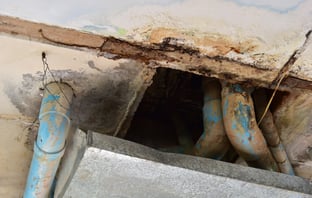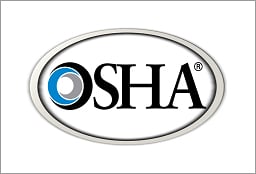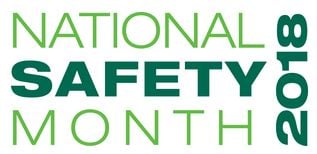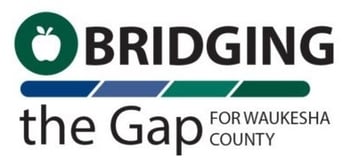 Summer in Wisconsin is filled with a wide range of temperatures, which can lead to severe storms. While many of us enjoy a good summer storm and the lightning show that comes along with it, we can't forget how dangerous they can be.
Summer in Wisconsin is filled with a wide range of temperatures, which can lead to severe storms. While many of us enjoy a good summer storm and the lightning show that comes along with it, we can't forget how dangerous they can be.
In May of 2018, the National Weather Service reported two fatalities from lightning strikes, including a field worker and a child playing underneath a tree.
According to AAA, lightning can strike up to 15 miles from thunderstorms - even when skies are clear. If you hear thunder, slow rumbles, or loud cracks, lightning is close enough to strike you or your home. In recent years, the average cost of lightning damage to a home was $7,639.
Our partners at West Bend Mutual provided the following tips for Lightning Safety.
Real Life Example:
Ted Marino, resident of Brookfield, WI and an R&R customer since 1984, explains the peace-of-mind he had immediately after his home caught fire from a lightning strike during a storm in 2010. Ted and Chris escaped without harm, but their house was another story...
For additional resources to protect your personal assets from storm damage, contact a KnowledgeBroker at R&R.

 Pollution liability policies are only for contractors involved in environmental or pollution cleanup … or so goes the common perception in the construction industry.
Pollution liability policies are only for contractors involved in environmental or pollution cleanup … or so goes the common perception in the construction industry. Over the years, R&R Insurance has designed a proven 7-step method to successfully manage workers compensation programs. Our Professional Services have become experts in analyzing medical reserve dollars and can clearly articulate how insurance companies determine the numbers. By knowing market trends, carrier calculations, and your own unique situation, there are dollars to gain.
Over the years, R&R Insurance has designed a proven 7-step method to successfully manage workers compensation programs. Our Professional Services have become experts in analyzing medical reserve dollars and can clearly articulate how insurance companies determine the numbers. By knowing market trends, carrier calculations, and your own unique situation, there are dollars to gain. Deadline approaching: employers have until July 1, 2018 to submit their OSHA 300 log data electronically directly to OSHA.
Deadline approaching: employers have until July 1, 2018 to submit their OSHA 300 log data electronically directly to OSHA. On June 19, 2018, the Department of Labor (DOL) released a final rule that gives small businesses more freedom to join together as a single group to purchase health insurance in the large group market or to self-insure. These benefit arrangements are called association health plans (AHPs). The final rule allows working owners without other employees, such as sole proprietors and other self-employed individuals, to join AHPs.
On June 19, 2018, the Department of Labor (DOL) released a final rule that gives small businesses more freedom to join together as a single group to purchase health insurance in the large group market or to self-insure. These benefit arrangements are called association health plans (AHPs). The final rule allows working owners without other employees, such as sole proprietors and other self-employed individuals, to join AHPs. According to the
According to the  On May 30th President Trump signed into law the “Right to Try” legislation. This new law gives terminally ill patients the right to use experimental medications that have not yet been approved by the Food and Drug Administration.
On May 30th President Trump signed into law the “Right to Try” legislation. This new law gives terminally ill patients the right to use experimental medications that have not yet been approved by the Food and Drug Administration.  On May 9, 2018, the Departments of Health and Human Service and the Treasury notified officials in Wisconsin that their application for a state innovation waiver under Section 1332 of the Affordable Care Act (ACA) was complete. The Departments will accept public comment on the waiver application until June 8, 2018 and approve or deny the application within 180 days.
On May 9, 2018, the Departments of Health and Human Service and the Treasury notified officials in Wisconsin that their application for a state innovation waiver under Section 1332 of the Affordable Care Act (ACA) was complete. The Departments will accept public comment on the waiver application until June 8, 2018 and approve or deny the application within 180 days. Through R&R's partnership with the Waukesha County Business Alliance, we are proud to support 'Careers Uncovered,' a program aimed at aligning education to high-growth industry pathways. R&R is actively engaged in assisting employees in attracting and retaining top talent.
Through R&R's partnership with the Waukesha County Business Alliance, we are proud to support 'Careers Uncovered,' a program aimed at aligning education to high-growth industry pathways. R&R is actively engaged in assisting employees in attracting and retaining top talent. Jason and Susan are a successful couple in their early 40’s, with two young children. They have two autos and a new home in Colgate, WI. They said they had a good relationship with their previous agent, however during a discussion with their wealth manager realized that they hadn’t had a coverage review in quite some time. During our initial 30 minute meeting at Jason’s office, we discovered some major coverage deficiencies: unfortunately a vehicle that had been traded in a few months ago and replaced with a newer vehicle was not accurately updated on their auto policy, leaving the vehicle uninsured. While that issue was quickly remedied, we also significantly reduced their risk exposure while decreasing their total premium 20% by rebalancing their program as follows:
Jason and Susan are a successful couple in their early 40’s, with two young children. They have two autos and a new home in Colgate, WI. They said they had a good relationship with their previous agent, however during a discussion with their wealth manager realized that they hadn’t had a coverage review in quite some time. During our initial 30 minute meeting at Jason’s office, we discovered some major coverage deficiencies: unfortunately a vehicle that had been traded in a few months ago and replaced with a newer vehicle was not accurately updated on their auto policy, leaving the vehicle uninsured. While that issue was quickly remedied, we also significantly reduced their risk exposure while decreasing their total premium 20% by rebalancing their program as follows:
